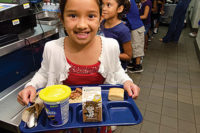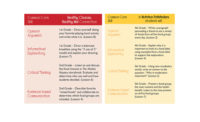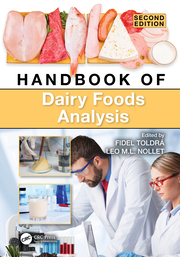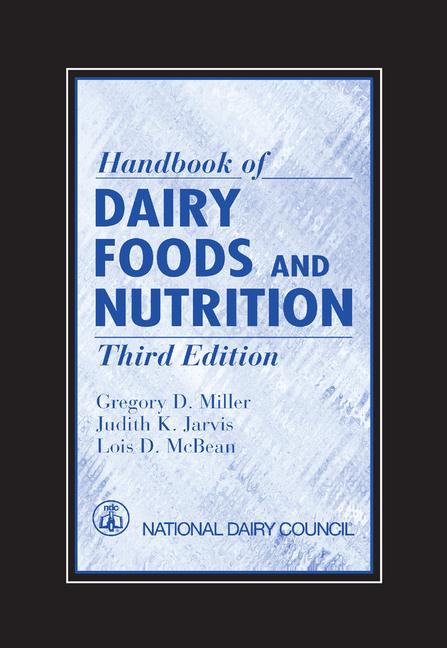Education, and the ability of students to learn and improve their lot in life, is part of the bedrock known as the American Dream. A growing body of evidence suggests that academic and lifelong success can be negatively impacted — not by lack of innate ability or failure to hit the books but by inadequate intake of nutritious foods.
While myriad factors are at play, the link between academic success and health is stronger than ever, validating Dairy Council of California’s long-held belief that healthy children make better students. In fact, the National Association of Chronic Disease Directors issued a strong “call to action” after the “Journal of Adolescent Health” showed a 96% correlation between adolescent health-risk behaviors — such as a diet low in dairy products, vegetables and fruits — and reduced academic success.
Academic performance measures like grades, standardized test scores and graduation rates improve after adding dairy foods, vegetables and fruits to diets. Moreover, according to the Centers for Disease Control and Prevention (CDC), students who engage in healthy activities such as healthy eating and physical activity also have better attendance, fewer behavioral problems at school and improved concentration, memory and mood.
Student health at risk
Childhood obesity is a serious problem in the United States, putting kids at risk for poor health. According to the CDC, obesity affects about 17% or 12.7 million children and adults and is even more prevalent among Hispanics and non-Hispanic blacks.
Increased obesity rates among youth are causing health problems that we previously didn’t see until adulthood, including high cholesterol, type 2 diabetes and high blood pressure. The Dietary Guidelines for Americans connects these conditions with lack of healthy eating.
“More than two-thirds of adults and nearly one-third of children and youth are overweight or obese. About half of all American adults — 117 million individuals — have one or more preventable chronic diseases, many of which are related to poor eating and physical activity patterns,” reports the guidelines.
The Dietary Guidelines for Americans also cites several nutrients of concern because they are under-consumed. Among these shortfall nutrients are vitamin D, calcium and potassium — all found in dairy foods.
So how do we improve the health of children? Schools are the perfect venue.
Schools and health and wellness strategies
In 2013, the American Academy of Pediatrics reviewed obesity prevention studies and found that interventions that include the school environment are more effective at preventing obesity than those that do not include schools. In addition, Kaiser Permanente conducted a study that showed 90% of parents say K–12 schools should play a role in reducing obesity in their community, and 90% of parents believe nutrition education is highly important.
One key effort to improve the health of students is the National School Lunch Program, which provides nutritionally balanced, low-cost or free lunches to children each school day. School meal programs offer a critical safety net for children, increasing their access to nutritious foods, supporting their growth and development and fostering lifelong healthy eating habits. In fact, students who participate in the program have been shown to perform better in school, and because of the link between school meals and academic success, many schools are expanding to offer breakfast, snack and even summer meal programs.
Providing nutritious foods at school is just one piece of the puzzle.
The dairy industry’s positive impact
Dairy Council of California has long focused its efforts and resources on schools because they are the most natural crossroad for childhood and adolescent health and nutrition education. With growing evidence about the connection between health and academic success, the importance of intervention and education about healthy eating at schools is more compelling than ever.
Nutrition education has been the backbone of Dairy Council of California’s cause to elevate the health of children and parents in California through the pursuit of lifelong healthy eating habits with milk and dairy foods as a cornerstone. Our classroom programs and school-based assemblies educate more than 2 million students in California and are increasingly being strengthened by new online tools, including “Eat Move Win” which educates high school students and is Dairy Council of California’s first 100% online program.
Outside the classroom, Mobile Dairy Classroom assemblies for kindergarten through sixth-grade students teach food literacy, where milk and dairy foods come from, cow care on the farm, the five food groups, the milking process and agricultural technology.
Learning continues in the school cafeteria where Dairy Council of California and partners like California Department of Education and University of California Cooperative Extension provide technical assistance, implementing behavioral economics with the Smarter Lunchrooms Movement. It’s a program that encourages students to make better nutrition decisions by changing the way food choices, including milk, are presented in cafeterias.
This year, we also partnered with the California School-Based Health Alliance to bring nutrition education to school health centers. As a partner in the alliance, Dairy Council of California also provides online resources and professional development for educators about the importance of proper nutrition, including the benefits of milk and dairy foods, as a foundation for student success.
Let’s work together
The entire dairy industry has the ability to positively impact the health of schoolchildren and help them achieve their full potential. Together, we must continue to promote evidence-based classroom nutrition education, support school health clinics and integrate nutrition education and healthy eating into local school wellness policies.
While schools are an important vehicle for the dairy story, the dairy message should also be shared elsewhere. Imagine if all of us in the industry worked together to talk consistently and often about the benefits of healthy eating habits and the ability of nutritious dairy foods to improve health? At Dairy Council of California, we believe doing so can create greater collective impact.
Whether as a producer, processor, trade association or other stakeholder, coming together to advance our common message and focus on health — and the ability of milk and dairy foods to improve health — is critical to making a profound difference.







